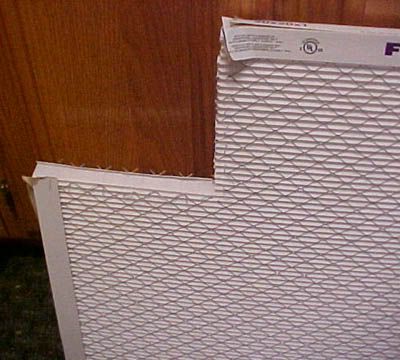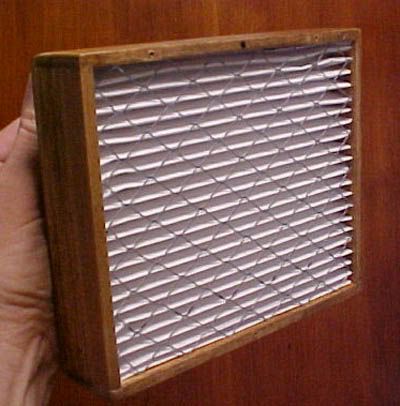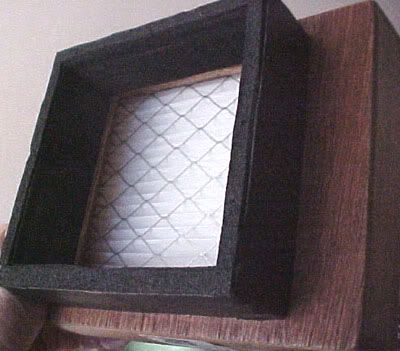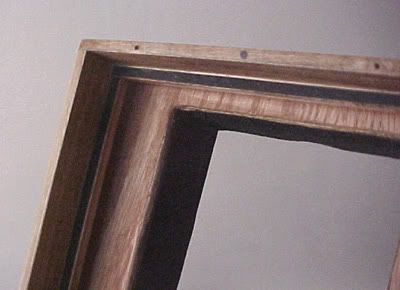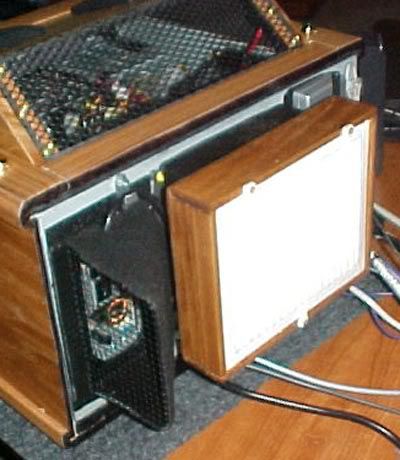
For the test I used a medium speed Yate Loon fan and a Fanmate2 speed controller. I found very similar effects on fan speed going from 11v to 5v, when using the different filters. So for this test the numbers are from the 11v test. Using a different fan would no doubt give different results, so any numbers you might get with this same test, would be different. But I'm interested in the restriction results of the different filters, not in the exact fan speed. Here's what the test setup looks like.....
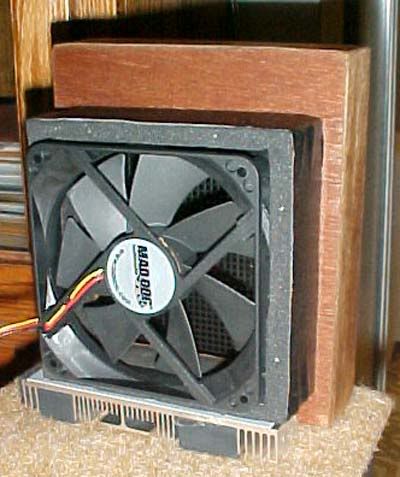

Here's a photo of the different filters I used. I also tested a wire grill, and a case cut-out from an Antec Aria (a low restriction design).....from the upper left you see:
A Hamilton Beach pleated paper filter
A cutout of a Nissan Altima Cabin filter also pleated material
A piece of a plastic electrostatic filter from a furnace filter
A piece of a plastic extrusion (gutter guard) to hold the thin filters, keeping them from getting sucked into the fan.
A pieced together piece of flat vent filter material from Home Depot
A piece of a foam window AC filter
The Yate Loon fan
The wire grill
The cut-out from the Aria case.

The Yate loon will do 1600rpms @11v in free air sitting vertical, ambient of 28C, about 50% relative humidity. In the wood housing the rpms remain the same.....with no filters. Here are the drops in rpm using the different filters/restrictions.....
A wire grill.....rpm drop 0rpm.
The Antec Aria cut-out.....rpm drop -10rpms
The Electrostatic filter.......rpm drop -50rpms.
The extruded plastic piece.....rpm drop -10rpms.
The extruded plastic plus the ac foam filter.....rpm drop -80 rpms
The extruded plastic plus the vent filter.....rpm drop -90rpms.
The Nissan Altima cabin filter......-170rpms
The Hamilton beach filter......-190 rpms.
The numbers speak for themselves, but do not tell how good at filtering dust each filter is. From my experience, the two pleated filters are by far the best at filtering dust. Plus those two can go for a much longer time without cleaning or replacement. IMHO.....if you want the best filter, you will get the most restriction, and the higher rpm drop. This will also increase the noise level slightly. So like almost everything, you will have to make a decision about what you want.


